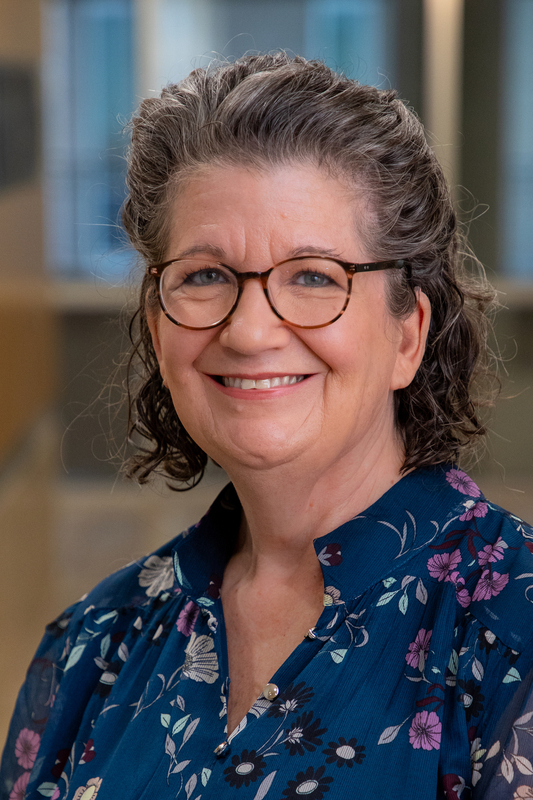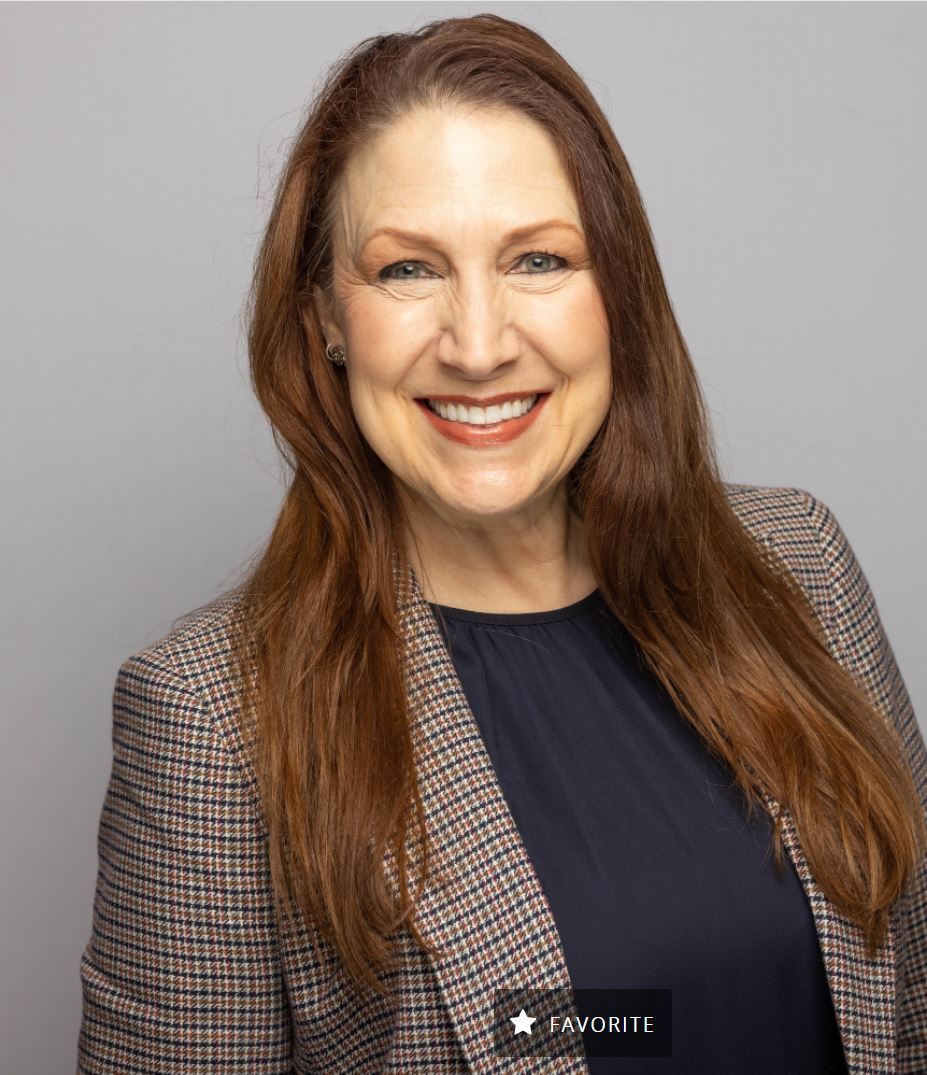
Learning Center
Learning Catalog Advanced Search
-
Contains 3 Component(s), Includes Credits Includes a Live Web Event on 04/09/2025 at 1:00 PM (EDT)
This presentation will discuss potential reasons for drainage at catheter exit site of a vascular access device. Comprehensive overview of the lymphatic system. Review of lymph node locations and how these locations may vary. The option of lymph fluid drainage will be discussed. Discussion around the importance of identifying these structures with real time ultrasound visualization during pre-insertion assessment for any vascular access device insertion. In this session we will review all potential causes of drainage at an exit site and discuss potential treatment options.
This presentation will discuss potential reasons for drainage at catheter exit site of a vascular access device. Comprehensive overview of the lymphatic system. Review of lymph node locations and how these locations may vary. The option of lymph fluid drainage will be discussed. Discussion around the importance of identifying these structures with real time ultrasound visualization during pre-insertion assessment for any vascular access device insertion. In this session we will review all potential causes of drainage at an exit site and discuss potential treatment options.
Learning Objectives: At the conclusion of this session, learners will be able to:
- Describe the general functions of the lymphatic system.
- Describe lymph node/lymph vessel anatomy and the potential for variance in their location(s).
- Describe how to identify specific fluid draining from a vascular access device exit site.
- Discuss treatment options related to continuous drainage from an exit site.
- Explain the importance of identifying these structures with real time ultrasound visualization prior to the insertion of any vascular access device.
- Define Lymphorrhea

Casey Schuller, BSN, RN, VA-BC
Registered nurse with 24 years of clinical experience in the critical care and vascular access specialties. Focusing on vascular access clinical education for the last 15 years, specializing in education, new product trials/implementations, and device insertion training across the vascular access device portfolio. Was a member of an RN based VAT/Rapid/Code team that provided placement of all non-tunneled vascular access devices at bedside, including IO, arterial catheters, USG PIV, Midline, PICC, CICC, and HD catheters. Currently is the NW Ohio Bon Secours Mercy Health VAT supervisor providing services to the neonatal, pediatric, and adult patient populations. In addition to the clinical role, he is working to expand the in-hospital VAT and the regional mobile VAT scope to include bedside placement of all non-tunneled devices. Casey is passionate about expanding vascular access scope/practice through collaboration, education, and innovation.
CRNI® RUs: This session has been approved for 2 CRNI® recertification units and meets the non INS Meeting criteria.
Contact Hours: This session has been approved for 1 contact hour
Expiration date for receipt of contact hours: January 15, 2028
To receive contact hours for this educational activity, you are required to attend the entire educational activity and complete the evaluation.
The Infusion Nurses Society is approved as a provider of continuing nursing education by the California Board of Registered Nursing, provider #CEP14209. The certificate must be retained by the attendee for a period of 4 years.
-
Register
- Non-member - $45
- Member - Free!
- More Information
-
Contains 3 Component(s), Includes Credits Includes a Live Web Event on 02/11/2025 at 1:00 PM (EST)
Intravenous (IV) iron is a crucial treatment option for iron deficiency (ID) and iron deficiency anemia (IDA), especially in cases where oral iron supplements are insufficient, poorly tolerated, or ineffective. It is important for clinicians who are infusing IV iron to understand how to administer IV iron, assess and intervene if hypersensitivity reactions occur, and treat post-infusion hypophosphatemia. In this session, we will provide guidance on the administration of and classification of IV iron formulations, classification of, and management of infusion reactions and treatment-emergent hypophosphatemia.
Intravenous (IV) iron is a crucial treatment option for iron deficiency (ID) and iron deficiency anemia (IDA), especially in cases where oral iron supplements are insufficient, poorly tolerated, or ineffective. It is important for clinicians who are infusing IV iron to understand how to administer IV iron, assess and intervene if hypersensitivity reactions occur, and treat post-infusion hypophosphatemia. In this session, we will provide guidance on the administration of and classification of IV iron formulations, classification of, and management of infusion reactions and treatment-emergent hypophosphatemia.
Learning Objectives: At the conclusion of this session, learners will be able to:
• Know the intravenous iron formulations and their administration
• Describe and recognize complement-mediated hypersensitivity reaction (CARPA)
• Discuss the management of hypersensitivity reactions to intravenous iron
• Recognize formulations that lead to treatment-emergent hypophosphatemia and the populations most affected.
Layla Van Doren, MD, MBA
Dr. Layla Van Doren, MD, MBA is an Assistant Professor of Medicine at Yale School of Medicine, where she specializes in classical hematology with an expertise in the diagnosis and management of iron- related disorders, including iron deficiency and anemia.
CRNI® RUs: This session has been approved for 2 CRNI® recertification units and meets the non INS Meeting criteria.
Contact Hours: This session has been approved for 1 contact hour
Expiration date for receipt of contact hours: February 11, 2028
To receive contact hours for this educational activity, you are required to attend the entire educational activity and complete the evaluation.
The Infusion Nurses Society is approved as a provider of continuing nursing education by the California Board of Registered Nursing, provider #CEP14209. The certificate must be retained by the attendee for a period of 4 years.
-
Register
- Non-member - Free!
- Member - Free!
- More Information
-
Register
-
Contains 3 Component(s), Includes Credits Includes a Live Web Event on 01/15/2025 at 1:00 PM (EST)
This session explores the principles of Patient- and Family-Centered Care (PFCC) through the compelling story of an individual living with Short Bowel Syndrome (SBS) since birth, requiring long-term vascular access for 35 years. Audience members will gain insight on strategies to enhance patient and family centered care for individuals living with chronic vascular access needs in their patient settings. This session will highlight patient experiences, health care delivery challenges, and barriers to accessing appropriate and timely care. There will be a focus on resources, language to use, and actions to take to promote collaborative and compassionate delivery of care.
This session explores the principles of Patient- and Family-Centered Care (PFCC) through the compelling story of an individual living with Short Bowel Syndrome (SBS) since birth, requiring long-term vascular access for 35 years. Audience members will gain insight on strategies to enhance patient and family centered care for individuals living with chronic vascular access needs in their patient settings. This session will highlight patient experiences, health care delivery challenges, and barriers to accessing appropriate and timely care. There will be a focus on resources, language to use, and actions to take to promote collaborative and compassionate delivery of care.
Learning Objectives: At the conclusion of this session, learners will be able to:
- Learn an example of the rare gastrointestinal (GI) chronic disease journey
- Explain Patient- and Family-Centered Care (PFCC)
- Describe the challenges and gaps in requiring long-term vascular access
- Discuss strategies to implement a patient and family-centered approach in current care routine
- Illustrate the mechanisms behind successful partnerships between patient/family and clinical care providers

Swapna Kakani, MPH
Swapna Kakani, MPH, is an advocate, speaker, consultant, and researcher in rare and chronic disease health care delivery and patient experience. Through her platform, Swapna Speaks, Swapna has spoken across the world to various companies and associations and has given a TEDx talk. Swapna also does health care advocacy, research, and policy work for the intestinal failure, vascular access, and broader rare disease communities in her home state of Alabama and nationally. In 2017, she founded Alabama Rare, an organization advancing health care policy and education for Alabama’s rare disease community. In 2021, she, alongside parent researchers/advocates, co-founded the gutsy perspective, a research initiative driven by members of the short bowel syndrome community to ensure the patient and family narrative is represented in research and patient-centered outcomes. Swapna was born with short bowel syndrome and has lived with a combination of total parenteral nutrition (TPN), IV fluids, tube feeding, and an ostomy for 35 years. She received a small intestine transplant 10 years ago. Swapna resides in Huntsville, AL, and received her Master's degree in Public Health at the University of Alabama at Birmingham.
CRNI® RUs: This session has been approved for 2 CRNI® recertification units and meets the non INS Meeting criteria.
Contact Hours: This session has been approved for 1 contact hour
Expiration date for receipt of contact hours: January 15, 2028
To receive contact hours for this educational activity, you are required to attend the entire educational activity and complete the evaluation.
The Infusion Nurses Society is approved as a provider of continuing nursing education by the California Board of Registered Nursing, provider #CEP14209. The certificate must be retained by the attendee for a period of 4 years.
-
Register
- Non-member - $45
- Member - Free!
- More Information
-
Contains 0 Component(s)
Dawn Berndt announces her retirement and introduces a new host for the INS Infusion Room. Dawn reflects over her career, time served at INS, and her experiences as the podcast host. She offers words of wisdom and opens dialogue regarding the future of the podcast, including some new upgrades and changes with the relaunch.
Dawn Berndt announces her retirement and introduces a new host for the INS Infusion Room. Dawn reflects over her career, time served at INS, and her experiences as the podcast host. She offers words of wisdom and opens dialogue regarding the future of the podcast, including some new upgrades and changes with the relaunch.

Dawn Berndt, DNP, RN, CRNI®
Dawn Berndt, DNP, RN, CRNI® serves as the INS Clinical Education and Publications Manager. She has been an active INS member and a CRNI® since 2005. Dr. Berndt served on INS’ National Council on Education and on the INS board of directors as a director-at-large from 2017 to 2018. Prior to joining the INS team, she worked for 13 years as a clinical nurse specialist for infusion and as nurse manager of the infusion center, the venous access team, and the RN response team at the University of Wisconsin Hospital and Clinics. Dr. Berndt holds a doctor of nursing practice in clinical leadership from the Henry Predolin School of Nursing at Edgewood College in Madison, Wisconsin and a master’s of nursing education from the University of Wisconsin School of Nursing.
Host: Derek Fox, MSN, RN, VA-BC, CRNI®, NEA-BC, Nurse Educator
Guest: Dawn Berndt, DNP, RN, CRNI®, Editor-in-Chief, Journal of Infusion Nursing
Dawn Berndt announces her retirement and introduces a new host for the INS Infusion Room. Dawn Reflects over her career, time served at INS, and her experiences as the podcast host. She offers words of wisdom and opens dialogue regarding the future of the podcast, including some new upgrades and changes with the relaunch.
-
Register
- Non-member - Free!
- Member - Free!
- More Information
-
Register
-
Contains 3 Component(s), Includes Credits Recorded On: 11/20/2024
This session will provide an overview of findings gleaned from a point prevalence study on PIVC placement and complications. Details regarding the study process and associated findings will be provided. Lessons learned and education and practice implications will also be explored.
This session will provide an overview of findings gleaned from a point prevalence study on PIVC placement and complications. Details regarding the study process and associated findings will be provided. Lessons learned and education and practice implications will also be explored.
Learning Objectives: At the conclusion of this session, learners will be able to:
● Describe the process for a point prevalence study
● Discuss common findings gleaned from the point prevalence study
● Identify recommended practices to improve PIVC documentation and complication recognition
Judy Smith, MSN, RN, CRNI®
Judy Smith, MSN, RN, CRNI®, serves as Director of Vascular Access and Wound Care for Ascension Seton in Austin, Texas. She completed her BSN at the University of Texas at Austin in 1995 and her MSN in Healthcare Systems Management at Loyola University New Orleans in 2010. She has worked in the Vascular Access specialty for 21 years and published 2 research studies on disinfection of needleless connectors and 1 point prevalence study related to PIVC complications and documentation. She has presented at many Vascular Access and Infusion Therapy conferences in the United States and New Zealand. Judy enjoys reading and spending time with her family, especially her 2 grandsons.

Vallire Hooper, PhD, RN, CPAN, FASPAN, FAAN
Vallire Hooper, PhD, RN, CPAN, FASPAN, FAAN, is a Senior Nurse Scientist with Ascension. She has been a nurse for over 35 years, with a primary focus in perianesthesia nursing, working as a staff nurse, Clinical Nurse Specialist, and lastly, as a Clinical Nurse Scientist for the last 14 years. Dr Hooper obtained her PhD in Nursing from the Medical College of Georgia in 2009, with a research focus on factors influencing the multidisciplinary adoption of evidence-based clinical practice guidelines. She is a Fellow in the American Society of PeriAnesthesia Nurses as well as the American Academy of Nursing. Dr Hooper’s primary research interests include clinically focused patient outcomes research and factors influencing nursing care delivery.
CRNI® RUs: This session has been approved for 2 CRNI® recertification units and meets the non INS Meeting criteria.
Contact Hours: This session has been approved for 1 contact hour
Expiration date for receipt of contact hours: November 20, 2027
To receive contact hours for this educational activity, you are required to attend the entire educational activity and complete the evaluation.
The Infusion Nurses Society is approved as a provider of continuing nursing education by the California Board of Registered Nursing, provider #CEP14209. The certificate must be retained by the attendee for a period of 4 years.
-
Register
- Non-member - $45
- Member - Free!
- More Information
-
Register
-
Contains 1 Component(s)
In 2017, INS formed a Vesicant Task Force (VTF) with the goal to formulate an evidence-based list of noncytotoxic vesicant medications and solutions. At the conclusion of that work, the VTF recommended that the list be updated on a regular basis as new data emerge and as new medications are introduced into the market. So, in 2021, a new VTF was formed to review the literature and revise the 2017 vesicant list. Recognition of vesicants and their relative risk of injury is essential to extravasation prevention, early recognition, and appropriate treatment. To this end, the VTF developed and published an updated Extravasation Prevention Checklist in 2024. We are pleased to share this updated Extravasation Prevention Checklist in the INS Learning Center. To access the checklist, click "Register" and log in. Then, you can download the official document.
In 2017, INS formed a Vesicant Task Force (VTF) with the goal to formulate an evidence-based list of noncytotoxic vesicant medications and solutions. At the conclusion of that work, the VTF recommended that the list be updated on a regular basis as new data emerge and as new medications are introduced into the market. So, in 2021, a new VTF was formed to review the literature and revise the 2017 vesicant list. Recognition of vesicants and their relative risk of injury is essential to extravasation prevention, early recognition, and appropriate treatment. To this end, the VTF developed and published an updated Extravasation Prevention Checklist in 2024. We are pleased to share this updated Extravasation Prevention Checklist in the INS Learning Center.
To access the checklist, click "Register" and log in. Then, you can download the official document.
To access the complete article in the Journal of Infusion Nursing:
-
Register
- Non-member - Free!
- Member - Free!
- More Information
-
Register
-
Contains 3 Component(s), Includes Credits Recorded On: 09/18/2024
The treatment of an extravasation, the inadvertent delivery of a vesicant into the tissue around a vascular access device (VAD), is a source of patient harm that is under-recognized, under-reported, and thus likely ineffectively treated. Unfortunately, recommendations for extravasation treatment (primarily reliant on case reports) can be difficult to leverage into clear clinical guidelines, increasing the risk of inadequate or delayed post-extravasation monitoring and treatment. This presentation will review vesicant properties and their mechanisms of tissue injury, peripheral vs central VAD extravasation risks with related prevention measures, and recommended extravasation treatment strategies and resources using a case study approach.
The treatment of an extravasation, the inadvertent delivery of a vesicant into the tissue around a vascular access device (VAD), is a source of patient harm that is under-recognized, under-reported, and thus likely ineffectively treated. Unfortunately, recommendations for extravasation treatment (primarily reliant on case reports) can be difficult to leverage into clear clinical guidelines, increasing the risk of inadequate or delayed post-extravasation monitoring and treatment. This presentation will review vesicant properties and their mechanisms of tissue injury, peripheral vs central VAD extravasation risks with related prevention measures, and recommended extravasation treatment strategies and resources using a case study approach.
Objectives:
- Describe the properties of the major vesicant categories that may precipitate tissue injury
- Relate the relative extravasation risks of peripheral vs central VADS to extravasation prevention strategies
- Describe current recommendations for treatment of selected vesicant extravasations, using a case study approach

Barb Nickel, APRN-CNS, CCRN, CRNI®
Barb Nickel, APRN-CNS, CCRN, CRNI®, is a Clinical Nurse Specialist, specializing in critical care and vascular access. Her role includes staff development, quality improvement, and clinical consultation. She has presented nationally and published on infusion therapy. She was chair of the 2024 INS Standards of Practice Committee and is chair of the newly forming 2027 Standards of Practice Committee.
CRNI® RUs: This session has been approved for 2 CRNI® recertification units and meets the non INS Meeting criteria.
Contact Hours: This session has been approved for 1 contact hour
Expiration date for receipt of contact hours: September 18, 2027
To receive contact hours for this educational activity, you are required to attend the entire educational activity and complete the evaluation.
The Infusion Nurses Society is approved as a provider of continuing nursing education by the California Board of Registered Nursing, provider #CEP14209. The certificate must be retained by the attendee for a period of 4 years.
-
Register
- Non-member - $45
- Member - Free!
- More Information
-
Contains 3 Component(s), Includes Credits Recorded On: 08/21/2024
The need for alternate sites of care for oncology patients is growing with the expansion of the biologic drug portfolio. Insurance companies are shifting patients from hospital sites of service to independent providers, and the home and ambulatory clinic settings are now an attractive option for patients seeking more convenient sites for their infusions. In this session, we will outline the framework necessary to design an oncology infusion program, the policies and procedures necessary, and components of training needed to meet the challenges that serving this population of patients brings.
The need for alternate sites of care for oncology patients is growing with the expansion of the biologic drug portfolio. Insurance companies are shifting patients from hospital sites of service to independent providers, and the home and ambulatory clinic settings are now an attractive option for patients seeking more convenient sites for their infusions. In this session, we will outline the framework necessary to design an oncology infusion program, the policies and procedures necessary, and components of training needed to meet the challenges that serving this population of patients brings.
Learning Objectives: At the conclusion of this session, learners will be able to:
• list the critical components necessary to provide safe infusion care for the oncology population
• discuss the process used to determine medications’ appropriateness in the alternate infusion setting
• describe key points for a training program to be used for nurses in the expansion of their skillset to include oncology
• define effective communication methods and patterns to support the administration of oncology therapies in a setting outside of hospital outpatient facilities or physician office.
Pamela Jones McIntyre, MSN, RN, CRNI®, IgCN, OCN, VA-BC
Pamela Jones McIntyre, MSN, RN, CRNI®, IgCN, OCN, VA-BC, has over 4 decades of comprehensive nursing experience. She is considered a subject matter expert in infusion therapy, with extensive experience operating ambulatory infusion clinics for specialty and oncology therapies, and 24 years of experience as an operator and Vice President of Clinical Services for home infusion. Recent projects have focused on expanding oncology biologic therapies to alternate sites of infusion, which Ms. McIntyre is determined to see accomplished safely and in the best interest of the patients and providers. She provides consulting services to health care organizations for infusion nursing program development and newly established ambulatory infusion centers through her LLC, Expert Infusion Nurse Consulting.
CRNI® RUs: This session has been approved for 2 CRNI® recertification units and meets the non INS Meeting criteria.
Contact Hours: This session has been approved for 1 contact hour
Expiration date for receipt of contact hours: August 21, 2027
To receive contact hours for this educational activity, you are required to attend the entire educational activity and complete the evaluation.
The Infusion Nurses Society is approved as a provider of continuing nursing education by the California Board of Registered Nursing, provider #CEP14209. The certificate must be retained by the attendee for a period of 4 years.
-
Register
- Non-member - $45
- Member - Free!
- More Information
-
Register
-
Contains 3 Component(s), Includes Credits Recorded On: 06/11/2024
Over 2 billion intravascular devices are inserted globally each year, and determining optimal maintenance protocols is challenging. Literature cites late complications of central venous access devices (CVAD) range from 7.2% to 32.1%. Implanted vascular access devices (IVADs) are quoted to have lower risk than other CVADs but are not risk-free. Despite risk, patients often retain their devices for extended periods. In this session, we will review the basics of care and management of IVADs and let evidence-based practice guide the way to minimizing potential complications.
Over 2 billion intravascular devices are inserted globally each year, and determining optimal maintenance protocols is challenging. Literature cites late complications of central venous access devices (CVAD) range from 7.2% to 32.1%. Implanted vascular access devices (IVADs) are quoted to have lower risk than other CVADs but are not risk-free. Despite risk, patients often retain their devices for extended periods. In this session, we will review the basics of care and management of IVADs and let evidence-based practice guide the way to minimizing potential complications.
Learning Objectives: At the conclusion of this session, learners will be able to:
• Identify best practices when accessing IVADs, including pre-assessment, skin preparation, needle access, and positioning.
• Discuss dressing changes and options available when patients have skin variables making dry and intact dressings difficult to achieve.
• Review how tubing changes vary dependent on the infusate.
• Compare variances in flushing frequency and options related locking solutions.
Mary Jo Sarver, MN, ARNP, AOCN, CRNI®, VA-BC, LNC
CEO
Sarver Better Living
Mary Jo Sarver, MN, ARNP, AOCN, CRNI®, VA-BC, LNC, has more than 37 years of experience in infusion therapy and oncology/hematology care. Her role focuses on continuity of care and seamless transitions for patients within and outside the acute care setting. She collaborates and acts as a consultant locally and on a system level for Providence, guiding staff development, competency assessment, and process improvement to improve outcomes in multiple areas of clinical practice and new graduate transition to practice. She attends cancer care conferences, rounds in the clinics and hospital, and actively consults and sees patients and families for treatment and care planning. She has published, conducted research, and spoken on multiple topics within the United States. For decades, passion has prompted her to participate both locally on the Puget Sound Infusion Nurses Society (PSINS), Puget Sound Oncology Nursing Society (PSONS), and American Cancer Society (ACS) boards and to nationally assume various roles through the Infusion Nurses Society (INS) and Oncology Nursing Society) (ONS). She is CEO of Sarver Better Living Products LLC, a family-run company.
CRNI® RUs: This session has been approved for 2 CRNI® recertification units and meets the non INS Meeting criteria.
Contact Hours: This session has been approved for 1 contact hour
Expiration date for receipt of contact hours: June 11, 2027
To receive contact hours for this educational activity, you are required to attend the entire educational activity and complete the evaluation.
The Infusion Nurses Society is approved as a provider of continuing nursing education by the California Board of Registered Nursing, provider #CEP14209. The certificate must be retained by the attendee for a period of 4 years.
-
Register
- Non-member - $45
- Member - Free!
- More Information
-
Register
-
Contains 19 Product(s)
INS 2024 Virtual Conference will provide a great alternative for those who are not able to attend the in-person event. Participants will have the ability to attend 18 select sessions virtually and on-demand. This option also enables CRNI®s to earn up to 36 recertification units (RUs). The virtual conference will include some of the sessions in the Vascular Access Device (VAD) Track devoted to an important aspect of infusion therapy, vascular access devices as well as sessions included in the Alternative Care Setting Track dedicated to the care of patients outside of acute care settings.
INS 2024 Virtual Conference will provide a great alternative for those who are not able to attend the in-person event. Participants will have the ability to attend 18 select sessions virtually and on-demand. This option also enables CRNI®s to earn up to 36 recertification units (RUs). The virtual conference will include some of the sessions in the Vascular Access Device (VAD) Track devoted to an important aspect of infusion therapy, vascular access devices as well as sessions included in the Alternative Care Setting Track dedicated to the care of patients outside of acute care settings.
-
Register
- Non-member - $720
- Member - $595
- More Information
-
Register









